The final results, plus some reading material.
Dad’s recipe book. It has never once crossed my mind to deviate from or replace this recipe. This recipe makes pareve hamantaschen dough that is tasty and of good consistency on its own – crisp the first day or two, softening up as times goes by – and does not need to resort to such bizarre tricks as adding cream cheese or sticks of butter.
The flip side of this card has the recipes for prune and poppy (mun) fillings, which were the only ones I dared make for years, since the mere mention of some non-standard variety prompted outraged cries of “traif!” from the parental unit.
The recipe calls for a pound, but they don’t sell them by the pound anymore – the pound box is now twelve ounces, I think.
The prune filling, before it’s cooked. We have orange slices, lemon zest, sugar, and prunes. Lots of prunes.
I do deviate a little from the family recipe by chopping up the orange slices and returning them to the filling mix.
A little overexposed, but you get the picture. After simmering for about 45 minutes, you can reduce the filling to paste simply through vigorous application of a fork, no food processor required.
The other Ashkenazi standard is poppy seed, which is as divisive in its own way. Some people have had bad experiences with too-dry filling (not a problem with mine) and some just don’t like poppy seeds in their teeth, which is unavoidable no matter what.
Raisins and honey are the binding agents and lemon zest and cinnamon for flavor.
All of which, plus other ingredients, becomes this, which looks like gunpowder mortar.
And here’s where we start getting deviant. Apricot is obviously not traditionally Ashkenazi, but it’s frequently sold in the bakeries in NYC, along with raspberry. It could be worse. It could be chocolate or peanut butter. *shudders*
That blop is frozen orange juice concentrate.
This is the second year I’ve made apricot and last year I forgot to make a note to cut up the apricots and raisins into smaller pieces because they simply don’t fall apart as easily as the prunes do. (They might if I soaked them, but I don’t.) And so a little post-cooking size adjustment was in order.
The dough from the recipe above. You can see the echoes of some excellent ribboning. What the recipe doesn’t say is that the dough works much better chilled.
The technique in this picture is correct as far as how to get the circles, but I completely forgot to flour, and so I ended up scraping and scrapping most of this round and then trying again.
Folding hamantaschen is pretty straightforward. You pinch closed one end…
… and then grab the next two at the same time.
It helps if you moisten the circumference of the circle, which I didn’t do here but remembered to do subsequently. If you don’t, the edges will come apart a little – you can see them start to do so here – and you end up with a good chance of either partial or total failure of structural integrity. They’ll be tasty, but ugly.
This is a much better example.
The first tray. I had much more poppy and prune filling, so they were the majority of the hamantaschen. Also, the leftover apricot and prune fillings can be used for jam on toast, but the poppy filling pretty much needs another baking application, so that also governs usage.
First in, first out.
Not bad considering I was reformatting my hard drive at the same time.

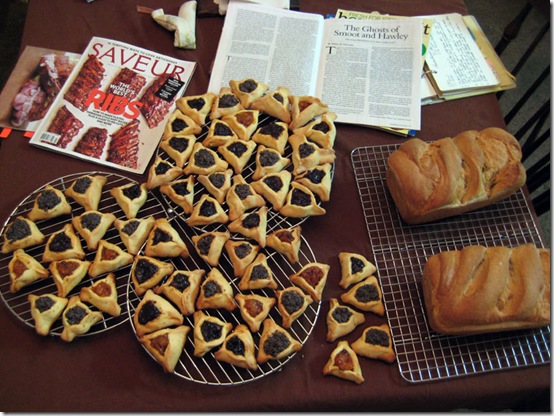
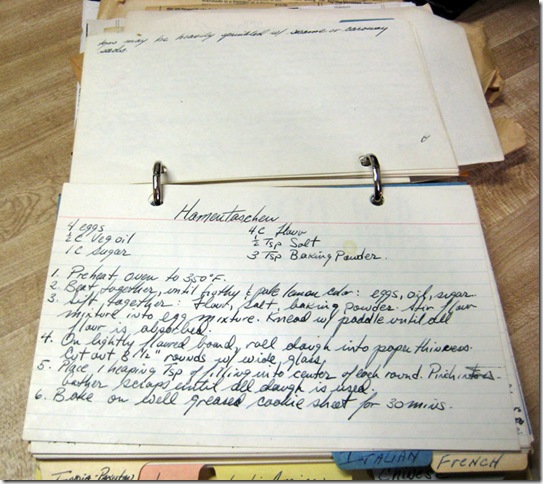
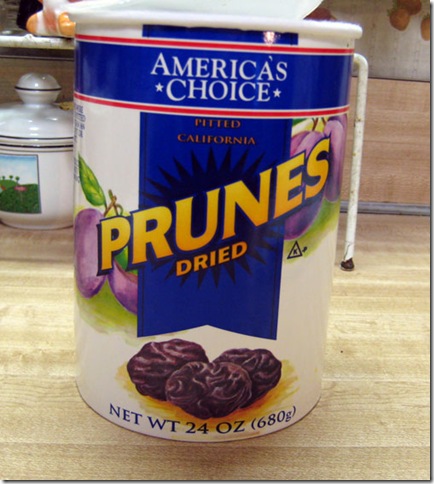
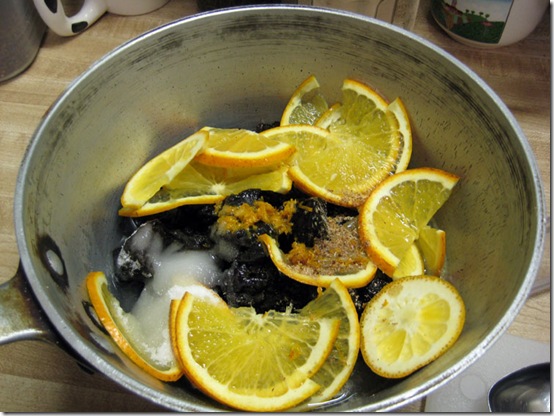

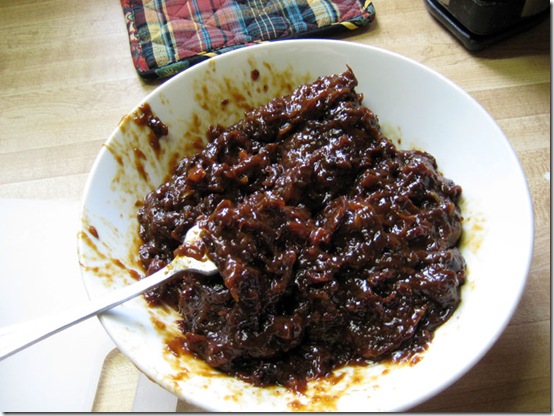
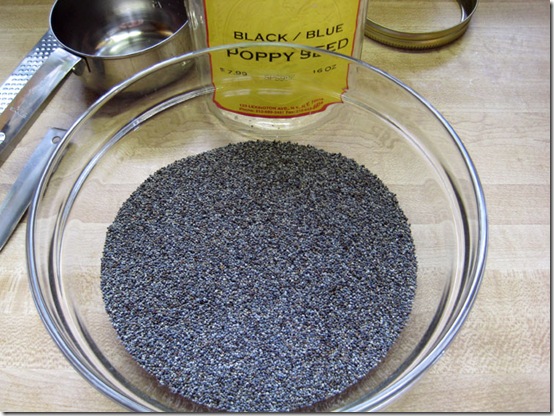
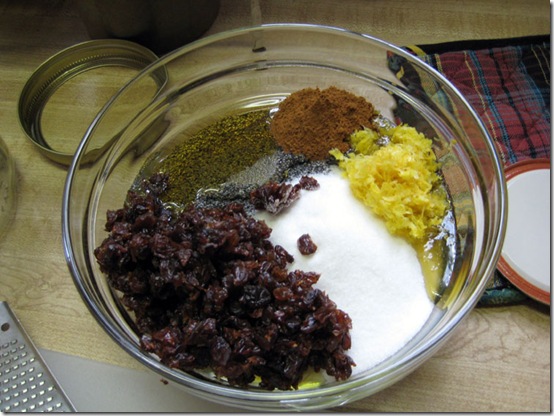

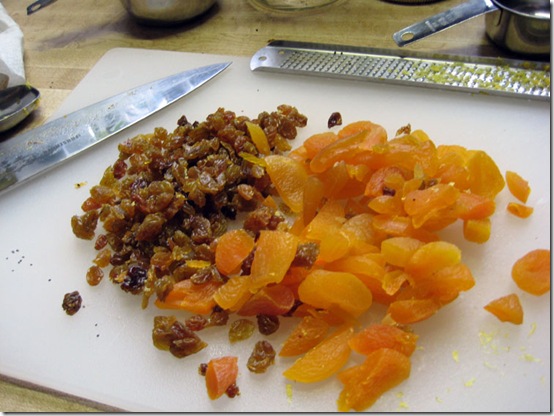





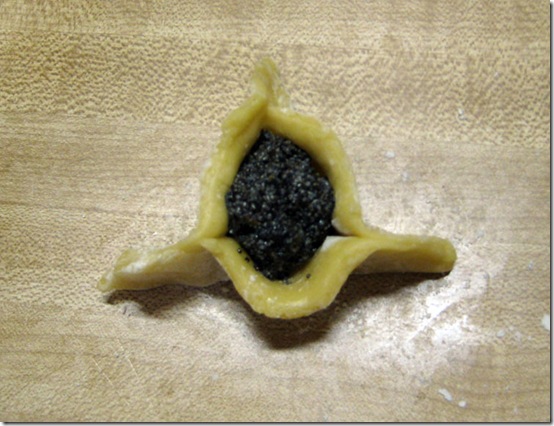
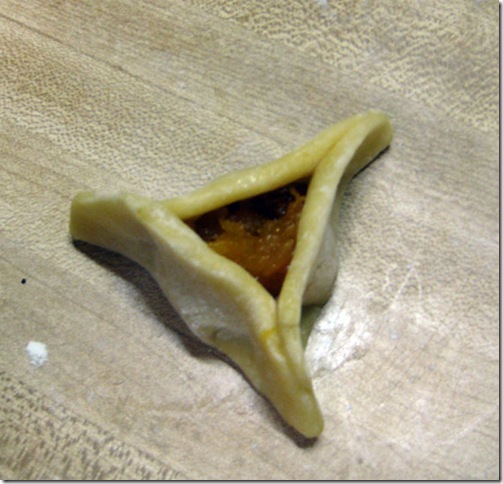


Many of the traditional recipes for hamantaschen are from northeastern Europe. There were no berries in the early spring, apricots may have been known to the rich, but again, not at Purim’s time of the year. Citrus, that tempers flavor in an otherwise too sweet concoction, would have been too expensive to use for that purpose; it likely became a filling ingredient when these recipes crossed the Atlantic.
I mentioned poppy seed hamentaschen yesterday, and they prompted cries almost as outraged as those of the paternal unit. Is there any historical evidence that these are any more traditional than apricot?
Poppy seed desserts are extremely common in former Soviet-dominated regions, which is where Ashkenazi Jews originate from, for both Jews and non-Jews. Apricots… not so much.
Not liking poppy seeds and not choosing to make them a tradition here in the States is different from them not being legitimate from a historical context.
I miss your hamentaschen. 😦
Wow! You have done a magnificent job. I enjoyed your art and yummy spells. Good luck to you.